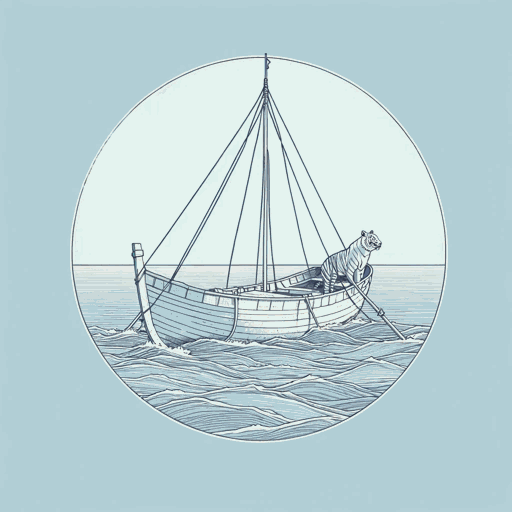86 pages • 2 hours read
Yann MartelLife of Pi
Fiction | Novel | Adult | Published in 2001A modern alternative to SparkNotes and CliffsNotes, SuperSummary offers high-quality Study Guides with detailed chapter summaries and analysis of major themes, characters, and more. For select classroom titles, we also provide Teaching Guides with discussion and quiz questions to prompt student engagement.
Themes
The Blurring of Fantasy and Reality
The blurring of fantasy and reality is one of the most predominant themes of Life of Pi and fundamental to the book’s core question of the credulity of Pi’s narrative. From the outset, Pi describes his formative experiences as stupefying, such as growing up in the Pondicherry Zoo and Botanical Gardens. Pi’s method of storytelling is Borgesian in its creation of hazy, labyrinthine atmospheres. Crucially, Pi understands the inability of language to capture true beauty. He says, “I wish I could convey the perfection of a seal slipping into water or a spider monkey swinging from point to point or a lion merely turning its head. But language founders in such seas” (15). Pi regularly points out the inherent deficiencies of language in capturing objective meanings which may or may not alleviate concerns about his clearly jumbled memory. Of the two influential men in Pi’s early life, his father and Francis Adirubasamy or Mamaji, he says, “Mamaji remembered, Father dreamed” (12). To remember and to dream imply two very different, but interrelated modes of cognition and information recall. Pi embodies both on a reality-illusion continuum.
The multilayered narrative structure of Life of Pi further complicates our ability to discern fact from fiction.
Related Titles
By Yann Martel



